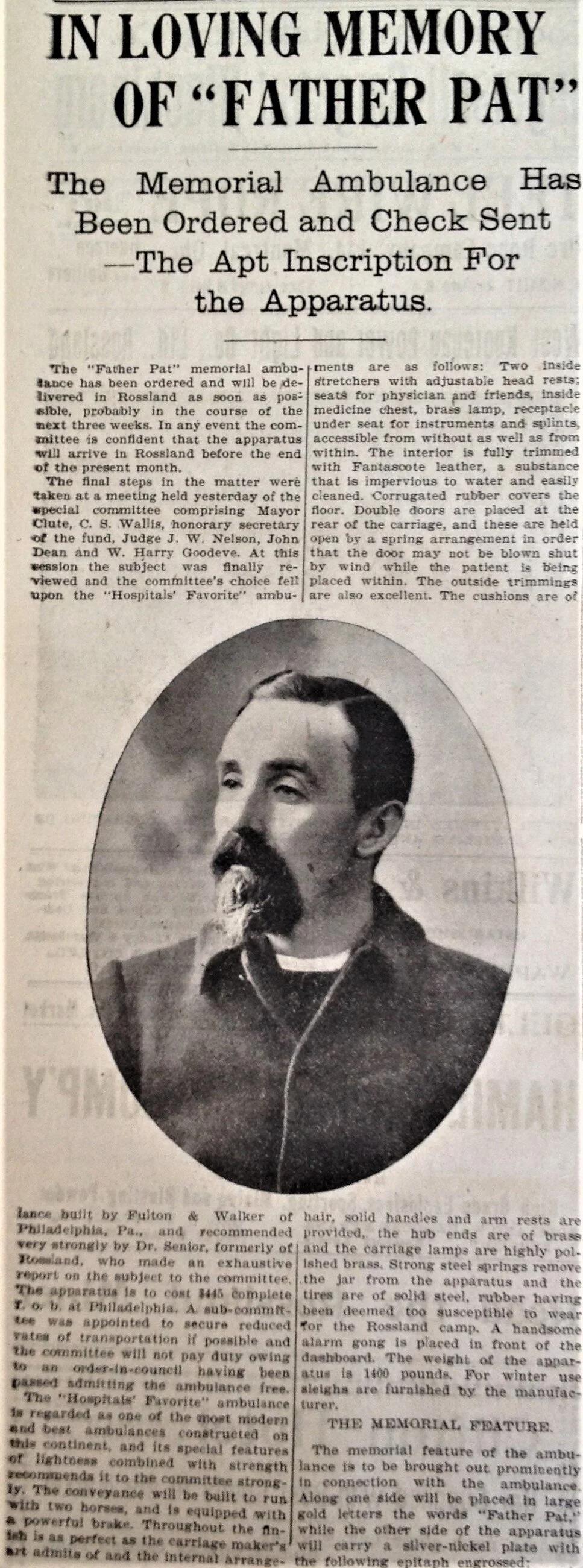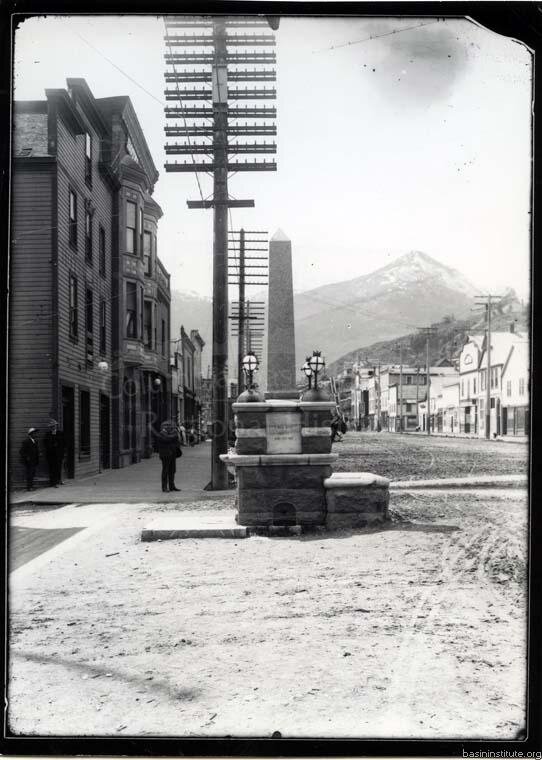“Father Pat” Reverend Henry Irwin
Image courtesy of Tourism Rossland/Don Conway
An ode to a beloved pioneer priest who was able to turn bar or cabin into a church for his flock…
"Father Pat" (Henry Irwin) was born in 1859 in Ireland. After being ordained as an Anglican priest, he felt called to become a missionary and was sent to Canada. First stationed in Kamloops, then the Selkirks, Father Pat had great appreciation for the wilderness of B.C. He organized a loop down the Columbia River, the Arrow Lakes, up the Kootenay to Nelson. He would travel by foot or with his horse, holding services in trappers cabins, prospectors bunks, or farmhouses.
In 1890, Father Pat went to the coast and married a Canadian woman - they were blissfully happy, but his wife and child tragically died by the end of that year. Heartbroken, he returned to the Kootenays. In Rossland, he went to his congregation rather than asking the miners to come to him, shouldering his way into the bar rooms, mounting a table, and insisting on silence.
Establishing a faith in a town full of gamblers, painted women, land sharks, and prospectors would be challenging, but Father Pat persevered and was much loved and respected by his rough and tumble community. In 1902, he had worked himself into ill health, and while homeward bound to England to recover, he died in Montreal.
The Rossland Miner, September 2nd, 1902
Word of his death soon reached Rossland and Rosslanders quickly raised enough funds to build the Father Pat memorial drinking fountain currently located on Columbia Ave., a new St. George's Church, and the Father Pat Memorial Ambulance, now retired and at home in the Rossland Museum.
Father Pat Memorial Drinking Fountain:
“Another interesting exhibit is the old Father Pat ambulance which has been refurbished for display and housed in a special structure outside the museum building. The horse-drawn ambulance was paid for in the early days by local miners as a memorial to the beloved Anglican priest. So it is fitting that the shelter for it at the new museum has been provided by a donation of $1,500 from Local 480 of the Mine Mill Union.”
Father Pat’s Memorial Ambulance Preservation
In 2017, the Museum completed a major renovation of the museum (more info here), including creating a new Entrance Gallery freeing up space in the JD McDonald Hall. This allowed for dedicated exhibition space to bring Father Pat’s Ambulance indoors for us to keep a closer eye on its condition and institute a long-term preservation plan.
With the help of the Rotary Club of Rossland and some of our volunteer crew, we removed the ambulance’s wheels in order to fit the vehicle through out front doors and stationed it in its new home in the JD McDonald Hall. Thank you also to Teck Trail Operations and the City of Rossland for coming up to clear away the rest of the original shelter allowing us to turn the platform into a little picnic area!
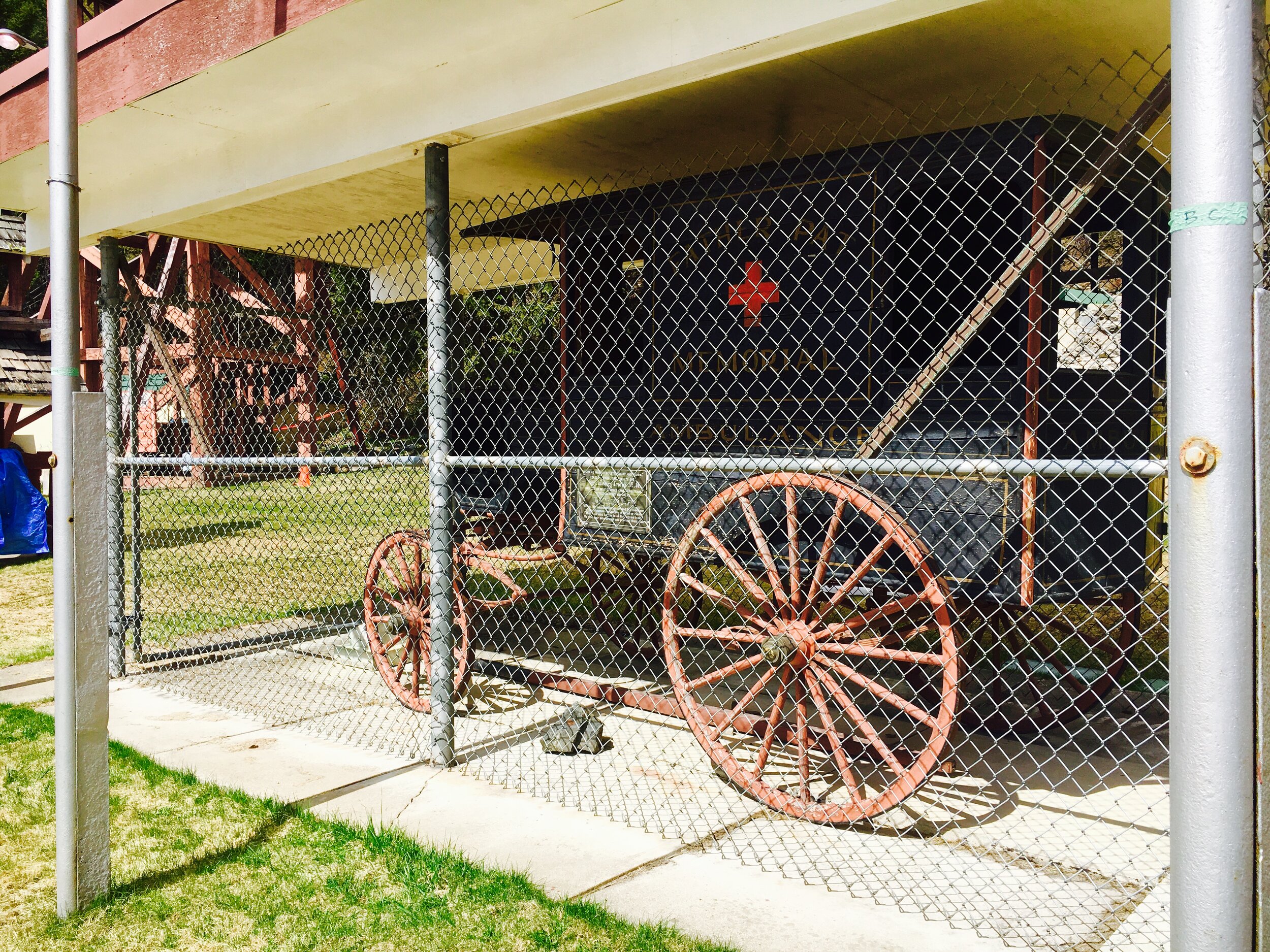
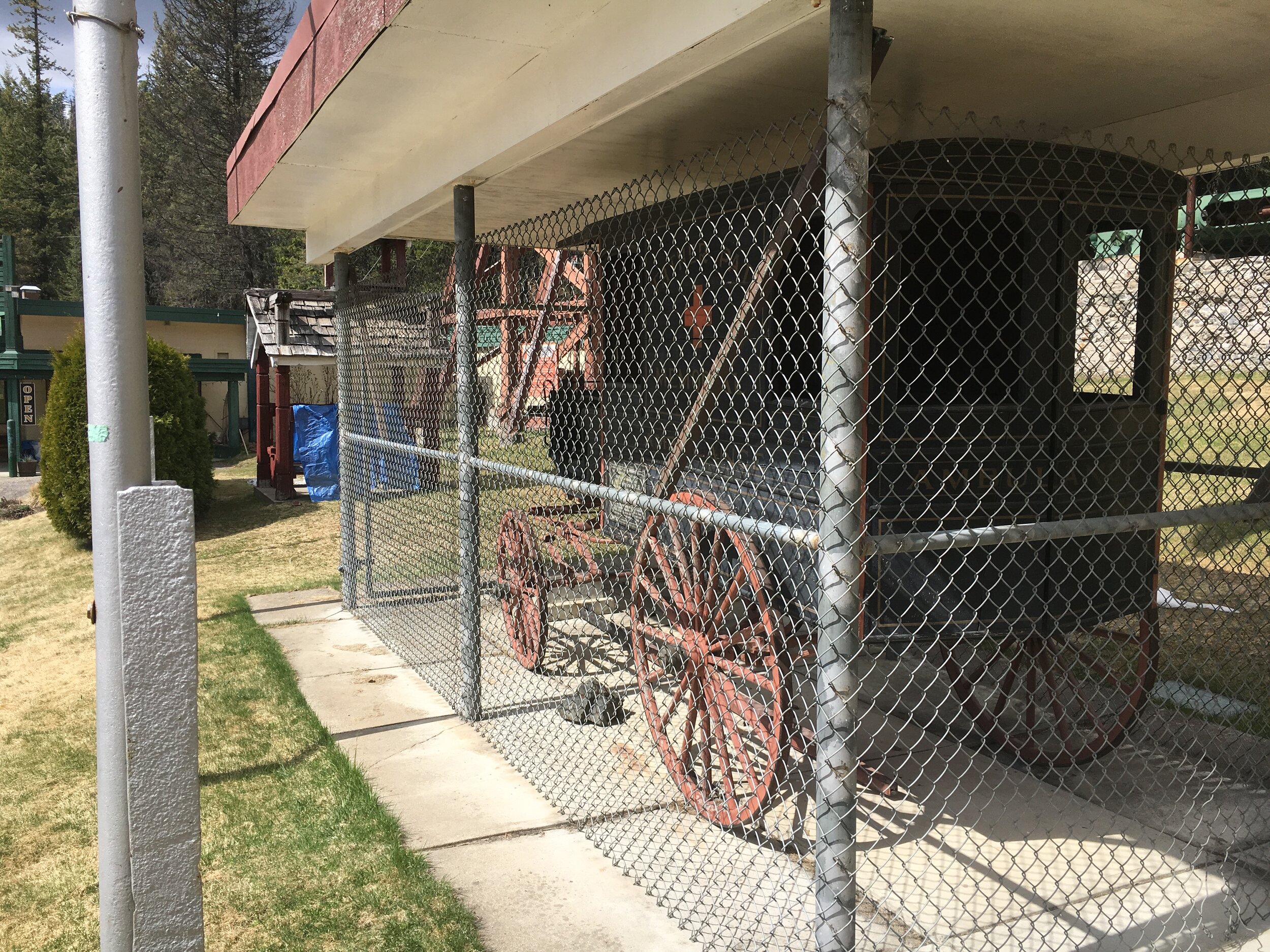


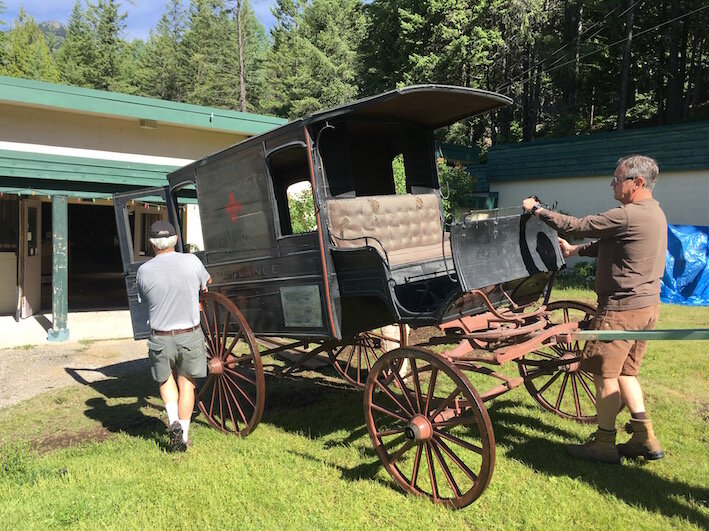
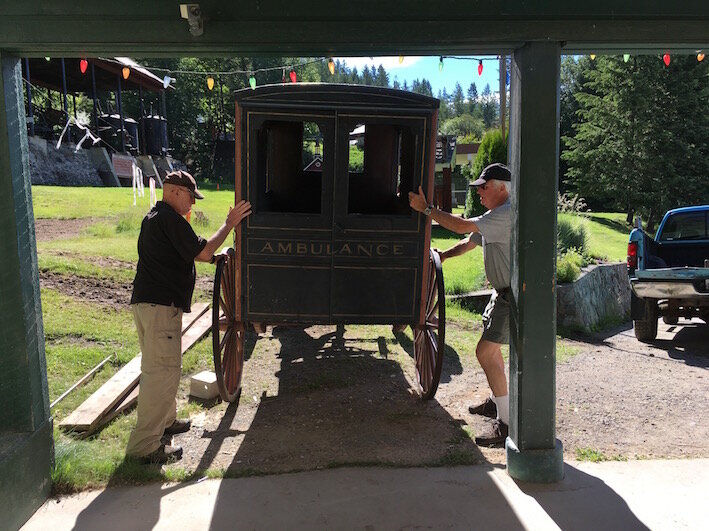
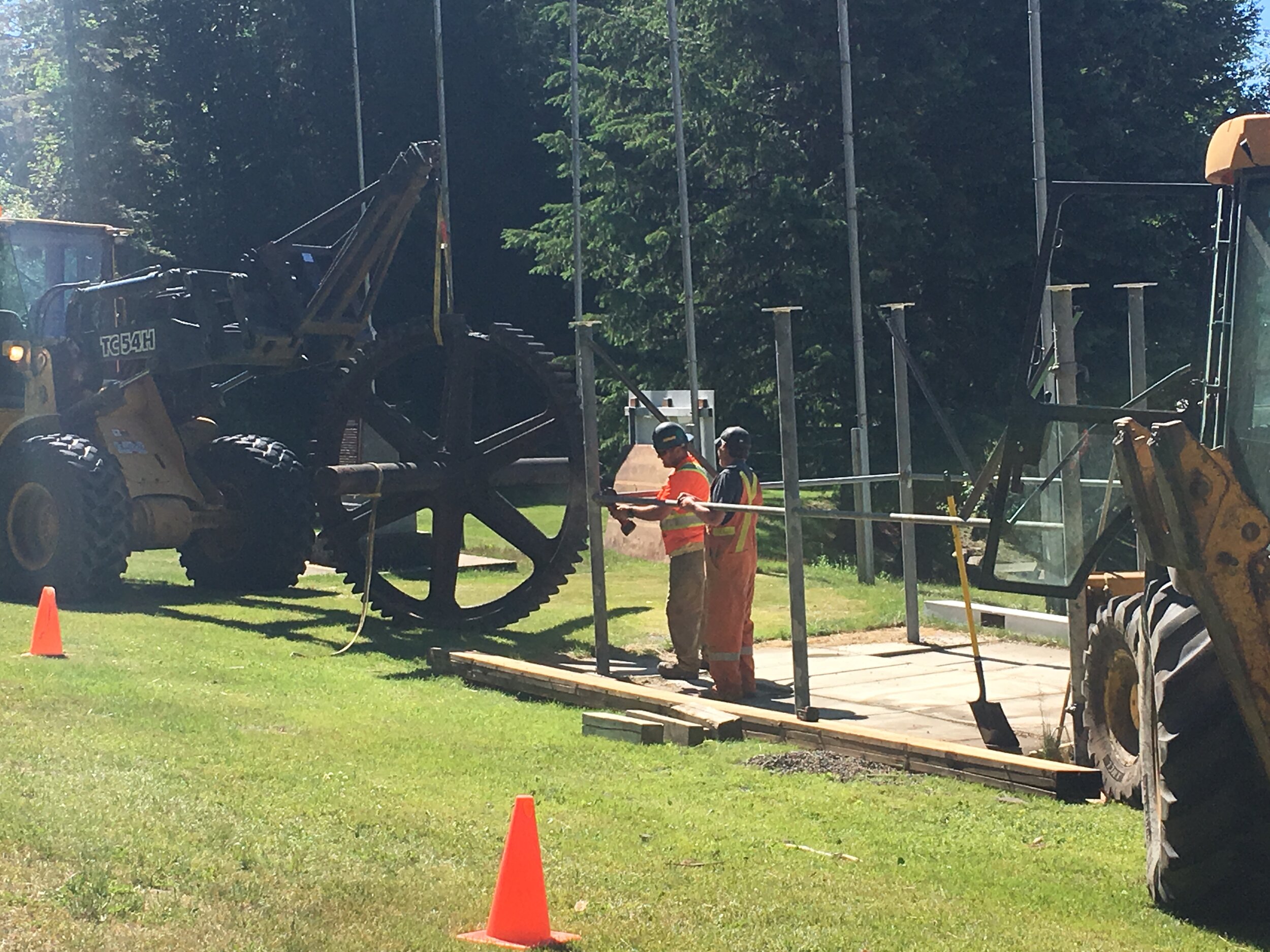
3D Printing Father Pat’s Ambulance
The Rossland Museum contacted I/O Design to assist with a fundraising effort to restore Father Pat’s Ambulance. The goal was to create a miniature 3D printed version of the original ambulance on display at the museum. This was a unique opportunity for I/O Design to use cutting edge technology to replicate the horse drawn ambulance that is now a part of Rossland history.
The start of I/O Design’s work was a visit to the Rossland Museum to conduct a 3D LiDAR scan of the ambulance. LiDAR scanning works by rapidly emitting laser pulses while rotating 360 degrees about 2 axis, capturing all surfaces within line of sight of the scanner. Six scans were taken around the perimeter of the ambulance. After stitching these individual scans together through a process called registration, a point cloud model of the ambulance was created.
Figure 1 – Scan data of ambulance
Figure 2 – 3D model, with scan data overlay
Figure 3 – Inventor model, optimized for printing
The point cloud was then used as a reference to model the ambulance. Because of the complex geometry surrounding the front wheel assembly, some simplifications were made while trying to preserve the overall look of the ambulance.
The next step was to commence 3D printing. The ambulance was printed in 8 unique parts, with the cab and box portions of the ambulance proving to be the most finicky. Numerous iterations were created, until a satisfactory print was obtained by utilizing different techniques from increasing wall thickness, adding stiffening ribs and changing the print orientation, to changing the geometry of the printed section.
Figure 4 – Results of the acetone bath
Figure 5 – Our model in its final resting place
With all of the unique parts printed, assembly was all that remained. A glue was created by mixing acetone and the plastic from failed prints. Parts were initially glued together based on their colour, before being placed in an airtight bowl with acetone vapour, creating an acetone bath that melded the print together. This process was slow, as there was a risk of leaving the ambulance in the acetone bath for too long, melting the print. To complicate the process, the acetone continues to have an affect on the print for a period of time after removal from the bath – therefore a series of shorter duration baths were used.
The final result was a 1:20 scaled version of Father Pat’s Ambulance that is now on display in the JD McDonald Hall in the Rossland Museum.
We are fundraising to support the long-term preservation needs of the memorial ambulance - you can help us by donating to the dedicated preservation fund below:
Continue Indoor Tour:
Continue Downtown Tour:



